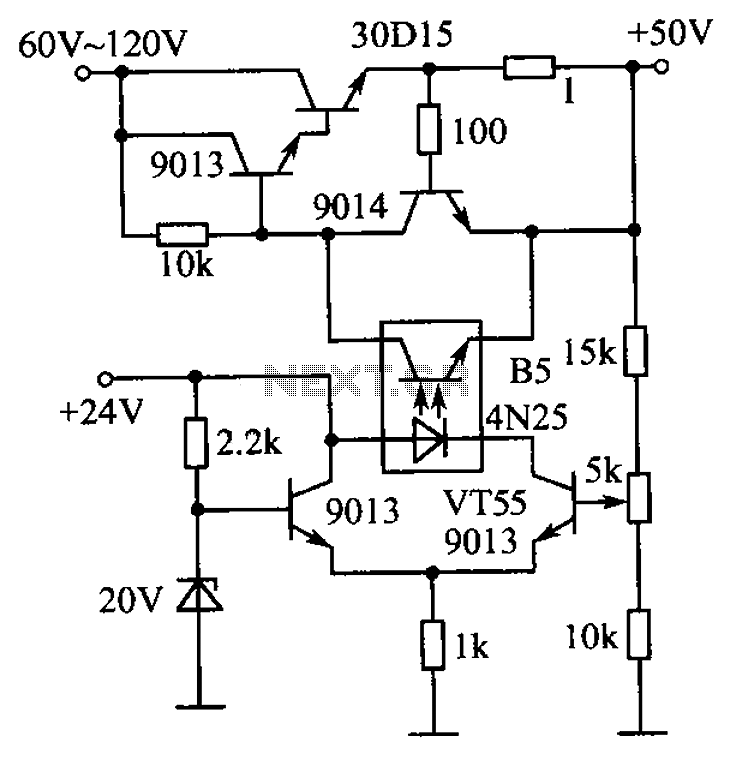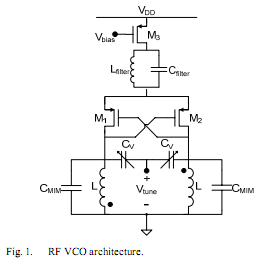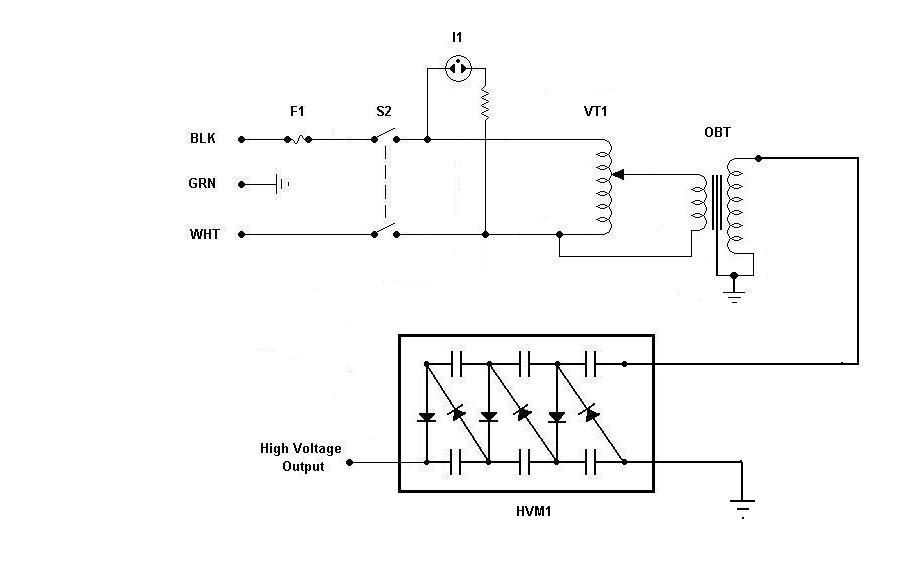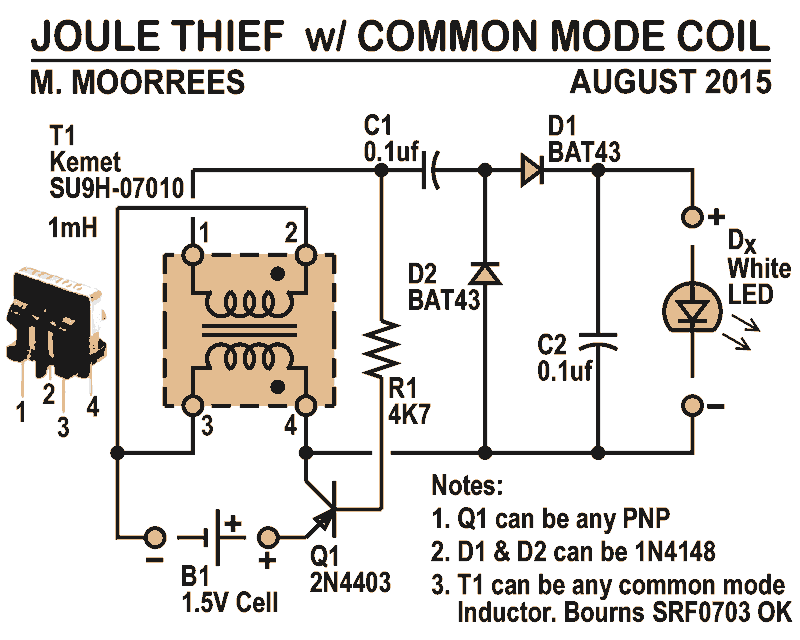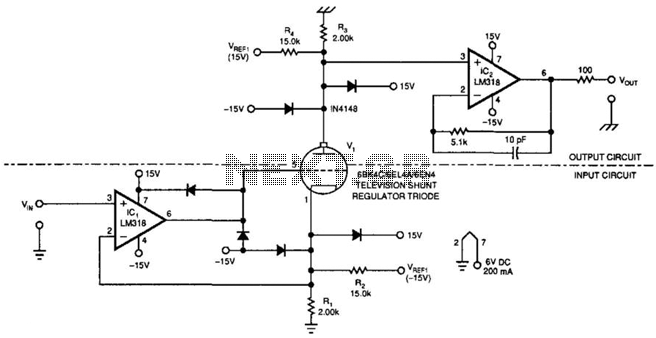
Voltage regulator for projection lamp
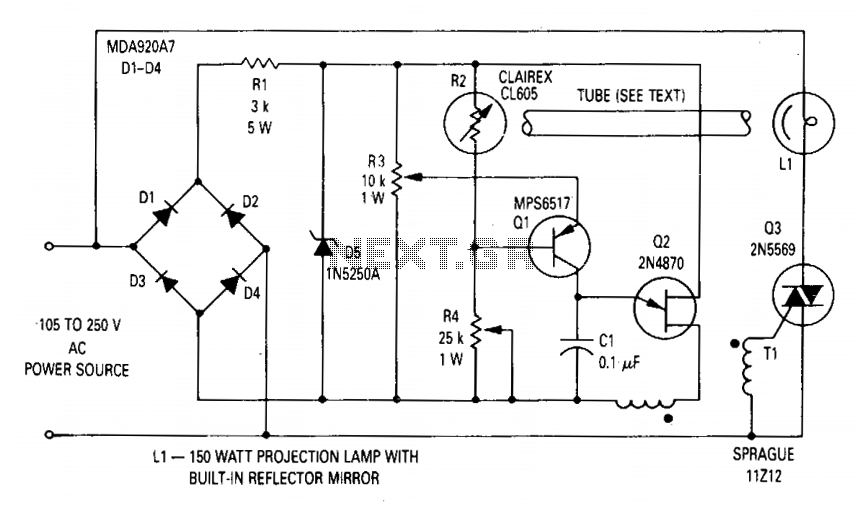
The circuit regulates the RMS output voltage across a load, specifically a projection lamp, to 100 volts ±2% for input voltages ranging from 105 to 250 volts AC. This regulation is achieved by indirectly sensing the light output of lamp LI and applying this feedback signal to the firing circuit (Q1 and Q2), which controls the conduction angle of TRIAC Q3. The lamp voltage is supplied by TRIAC Q3, with its conduction angle determined by the firing circuit for unijunction transistor Q2. The circuit is synchronized with the AC line through a full-wave bridge rectifier. The voltage supplied to the firing circuit is limited by zener diode D5. The phase control of the supply voltage is governed by the charging rate of capacitor C1. Q2 will trigger when the voltage across C1 reaches approximately 0.65 times the zener voltage. The charging rate of C1 is influenced by the conduction of Q1, which is modulated by the resistance of photocell R2. Potentiometers R3 and R4 are utilized to adjust the lamp voltage to 100 volts when the line voltage is at 105 volts and 250 volts, respectively.
This circuit design is focused on maintaining a stable output voltage for a projection lamp, ensuring optimal performance across a range of input voltages. The use of TRIAC Q3 allows for effective control of the lamp voltage by adjusting its conduction angle, which is crucial for achieving the desired output voltage. The feedback mechanism, which relies on sensing the light output of the lamp, ensures that any variations in the lamp's brightness are compensated for by adjusting the firing of the TRIAC.
The full-wave bridge rectifier plays a vital role in synchronizing the circuit with the AC line, converting the incoming AC voltage into a usable DC voltage for the control circuitry. Zener diode D5 is strategically placed to protect the firing circuit from voltage spikes, ensuring reliable operation. The charging rate of capacitor C1 is critical in determining how quickly the circuit can respond to changes in the input voltage, influencing the timing of the TRIAC's firing.
Photocell R2 serves as a variable resistor that adjusts based on the ambient light conditions, allowing for dynamic control of the lamp's brightness. The inclusion of potentiometers R3 and R4 provides a means to fine-tune the output voltage to the desired level, accommodating variations in the line voltage. This flexibility is essential for applications where consistent lighting is required, such as in projection systems. Overall, this circuit exemplifies a well-engineered solution for voltage regulation in lighting applications, combining feedback control, phase control, and protective measures to ensure optimal performance.The circuit will regulate the rms output voltage across the load (a projection lamp) to 100 volts ±2% for an input voltage between 105 and 250 volts ac. This is accomplished by indirectly sensing the light output of lamp LI and applying this feedback signal to the firing circuit (Ql and Q2) which controls the conduction angle of TRIAC Q3.
The lamp voltage is provided by TRIAC Q3, whose conduction angle is set by the firing circuit for unijunction transistor Q2. The circuit is synchronized with the line through the full-wave bridge rectifier. The voltage to the firing circuit is limited by zener diode D5. Phase control of the supply voltage is set by the charging rate of capacitor Cl. Q2 will fire when the voltage on Cl reaches approximately 0.65 times the zener voltage. The charging rate of Cl is set by the conduction of Ql, which is controlled by the resistance of photocell R2. Potentiometers R3 and R4 are used to set the lamp voltage to 100 volts when the line voltage is 105 volts and 250 volts, respectively.
🔗 External reference
This circuit design is focused on maintaining a stable output voltage for a projection lamp, ensuring optimal performance across a range of input voltages. The use of TRIAC Q3 allows for effective control of the lamp voltage by adjusting its conduction angle, which is crucial for achieving the desired output voltage. The feedback mechanism, which relies on sensing the light output of the lamp, ensures that any variations in the lamp's brightness are compensated for by adjusting the firing of the TRIAC.
The full-wave bridge rectifier plays a vital role in synchronizing the circuit with the AC line, converting the incoming AC voltage into a usable DC voltage for the control circuitry. Zener diode D5 is strategically placed to protect the firing circuit from voltage spikes, ensuring reliable operation. The charging rate of capacitor C1 is critical in determining how quickly the circuit can respond to changes in the input voltage, influencing the timing of the TRIAC's firing.
Photocell R2 serves as a variable resistor that adjusts based on the ambient light conditions, allowing for dynamic control of the lamp's brightness. The inclusion of potentiometers R3 and R4 provides a means to fine-tune the output voltage to the desired level, accommodating variations in the line voltage. This flexibility is essential for applications where consistent lighting is required, such as in projection systems. Overall, this circuit exemplifies a well-engineered solution for voltage regulation in lighting applications, combining feedback control, phase control, and protective measures to ensure optimal performance.The circuit will regulate the rms output voltage across the load (a projection lamp) to 100 volts ±2% for an input voltage between 105 and 250 volts ac. This is accomplished by indirectly sensing the light output of lamp LI and applying this feedback signal to the firing circuit (Ql and Q2) which controls the conduction angle of TRIAC Q3.
The lamp voltage is provided by TRIAC Q3, whose conduction angle is set by the firing circuit for unijunction transistor Q2. The circuit is synchronized with the line through the full-wave bridge rectifier. The voltage to the firing circuit is limited by zener diode D5. Phase control of the supply voltage is set by the charging rate of capacitor Cl. Q2 will fire when the voltage on Cl reaches approximately 0.65 times the zener voltage. The charging rate of Cl is set by the conduction of Ql, which is controlled by the resistance of photocell R2. Potentiometers R3 and R4 are used to set the lamp voltage to 100 volts when the line voltage is 105 volts and 250 volts, respectively.
🔗 External reference
